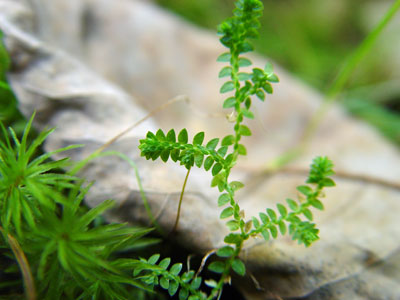DACF Home → Bureaus & Programs → Maine Natural Areas Program → Communities, Plants, and Animals → Rare Plants → Selaginella apoda

Selaginella apoda (L.) Spring
Creeping Spike-moss
- State Rank: S2
- Global Rank: G5
- State Status: Endangered
Habitat: Meadows, lawns, and streambanks. [Open wetland, not coastal nor rivershore (non-forested, wetland); Old field / roadside (non-forested, wetland or upland)]
Range: Maine and Ontario to the Northwest Territory, south to Florida, Louisiana and Texas.
Aids to Identification: Spike-mosses are inconspicuous, spore-bearing, vascular plants related to the club-mosses (Lycopodiaceae). They resemble mosses and may be frequently overlooked. Selaginella apoda has dimorphic leaves arranged in four ranks. The leaves of the lateral ranks are larger than those of the upper and lower ranks. Like other spike-mosses, the reproductive structure is a leafy, spore cone borne at the apex of the stem.
Ecological characteristics: In Maine, known from moist open spots in the southernmost part of the state.
Phenology: Flowers July - September.
Family: Selaginellaceae
Synonyms: Lycopodiodes apoda (L.) Kuntze.
Known Distribution in Maine: This rare plant has been documented from a total of 11 town(s) in the following county(ies): Androscoggin, Cumberland, York.
Reason(s) for rarity: At northern limit of its range; also very inconspicuous and possibly overlooked.
Conservation considerations: This plant is restricted statewide to southern Maine, and known populations are vulnerable to conversion of their habitat to residential or commercial use.